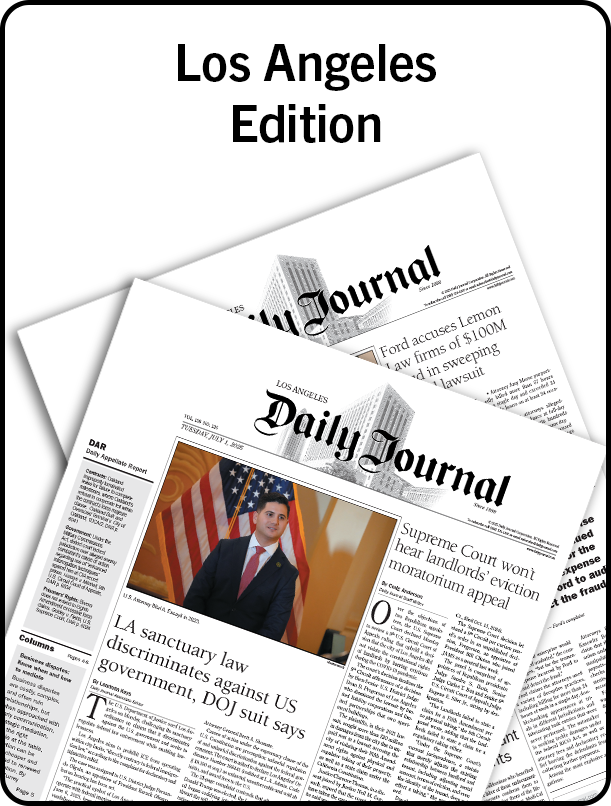For nearly 40 years, courts applied the Chevron doctrine when assessing agency actions, deferring to an agency's reasonable interpretation of statute, rather than imposing their own interpretation. However, in 2024, the Supreme Court overturned this practice in Loper Bright Enterprises v. Raimondo. In this ruling's wake, vigorous debate has erupted about its potential impact on future agency actions. One area of concern is how Loper Bright might affect judicial review of the Copyright Office's interpretations of copyright law. This article demonstrates that Loper Bright is unlikely to greatly impact copyright law, even in those limited instances in which courts previously granted the Copyright Office's interpretations Chevron deference.
The Loper Bright
decision
In Loper Bright, the Supreme Court condemned Chevron deference as an abandonment of the judiciary's responsibility to "apply their 'judgment' independent of the political branches when interpreting the laws those branches enact." The Court explained that, even if a statute is ambiguous, it still "has a best meaning, necessarily discernible by a court deploying its full interpretive toolkit" and this "best meaning" is the only acceptable interpretation of the law.
However, the Court affirmed the idea that "when a particular statute delegates authority to an agency consistent with constitutional limits, courts must respect the delegation, while ensuring that the agency acts within it." It also preserved Skidmore deference in which courts evaluate whether to give weight to an agency's interpretation based on factors such as the thoroughness of its analysis, the soundness of its reasoning, and the consistency of its position over time. Thus, even after Loper Bright, an agency's interpretation may still prevail so long as it doesn't conflict with a statute's "best meaning;" it is persuasive under Skidmore; or the agency acted within the scope of authority clearly conferred to it by Congress.
Loper Bright's impact
on copyright law
Even before Chevron's overturn, courts generally relied on Skidmore when assessing the Copyright Office's interpretations of the Copyright Act. When Chevron was invoked, cases commonly involved three main issues: 1) compulsive royalty rates; 2) eligible transmissions for compulsory licenses; and 3) group or supplementary registrations.
Compulsory license royalty rates and distributions
While the compulsory license royalty rates evolved over time, under the current system, Copyright Royalty Judges (CRJs) set rates for compulsory licenses and allocate royalty awards. In reviewing the CRJ's interpretations of the Copyright Act, Courts have repeatedly found that Congress expressly delegated to the Copyright Office the authority to create and carry out regulations in this area, thus, it is likely that even after Loper Bright, their decisions will be upheld.
In Intercollegiate
Broadcasting System v. CRB, webcasters challenged the CRJs' use of a
competitive market benchmark, claiming the statute required rates based on a "perfectly
competitive market." The D.C. Circuit rejected this, holding that the statute
is ambiguous as to the specific competitive model required. Applying Chevron,
the court deferred to the CRJ's choice, finding the selected model reasonable
and consistent with statutory goals. Nonetheless, the decision likely
would still be upheld today. The statute delegates the selection of the
appropriate model to the CRJs--provided
it meets a "willing buyer/willing seller" standard, which the competitive
market benchmark did. The decision ultimately affirms judicial oversight and
respects agency discretion within defined statutory bounds, which is consistent
with Loper Bright's principles.
In a similar case, SoundExchange, Inc. v. CRB, the D.C. Circuit evaluated whether the CRJs could use an "effective-competition" model under 17 U.S.C. § 114(f)(2)(B).
While the CRJs interpreted the statute as requiring
the use of an "effective competition" model, plaintiff webcasters argued the
statute prohibited such a model. Examining
the issue on its own, the court determined that the statute did not mandate the
use of a particular model, but that under the ambiguous statutory provision,
the CRJs' decision was reasonable. Id
at 56. Although phrased according to Chevron,
the court's decision rested not on deference to the CRJs, but rather its own
interpretation of the Copyright Act's delegation of authority.
Transmissions for compulsory licenses
Courts not only applied Chevron deference when assessing the royalty calculation methods for compulsory licenses, courts also applied this deference when examining agency interpretations of whether a transmission qualified for the statutory compulsory license. In WPIX, Inc. v. ivi, Inc., the Second Circuit upheld the Copyright Office's longstanding view that internet retransmissions aren't covered by § 111. Though framed as a Chevron case, the court independently analyzed statutory text, legislative history, and applied Skidmore factors, ultimately finding the agency's view persuasive. Although Chevron was cited, the court's decision rested on independent judicial analysis and persuasive agency reasoning--thus the agency's interpretation would survive post-Loper Bright.
Supplementary and group registrations
In the 2010s, controversy arose over collective works registered with the Copyright Office. Chevron was invoked in cases evaluating: 1) whether a collective work registration must list the title and author of each individual work; and 2) whether this registration registered each individual work in the compilation. The Copyright Office determined that 1) only the author of the collective work must be named, and 2) registration of a collective work covered the component works. Courts generally deferred to the agency's interpretation, whether applying Chevron or Skidmore, or in the case of Metro Regional Information Systems vs. American Home Realty Network Inc. (D. Md. 2012), both standards. Because courts upheld the interpretation under both standards, it would likely survive challenge today.
Conclusion
While Loper Bright overrules Chevron deference and reasserts the judiciary's primary role in statutory interpretation, its impact on copyright law is likely to be limited. Courts have historically applied Chevron sparingly in this area, often relying instead on direct statutory interpretation or the Skidmore framework. Even in cases where Chevron was invoked, courts frequently engaged in their own independent analysis or found clear congressional delegations of authority to administrative bodies.
This article is for general information purposes and is not
intended to be and should not be taken as legal advice.



